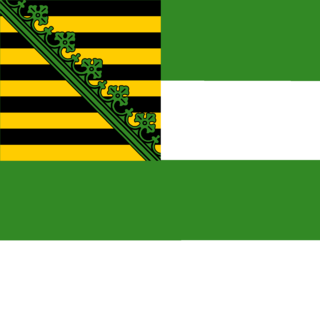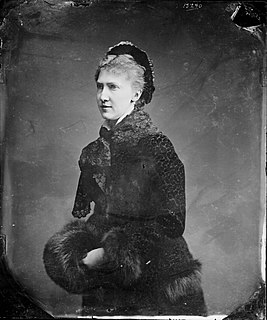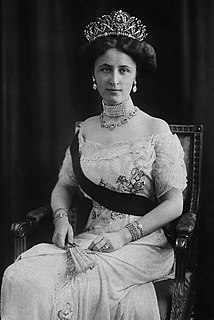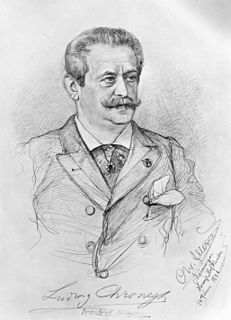Further reading
- Koller, Ann Marie (1984). The Theater Duke: George II of Saxe-Meiningen and the German Stage . Stanford University Press. ISBN 0-8047-1196-8.
| This German theatre-related article is a stub. You can help Wikipedia by expanding it. |
The Meiningen Ensemble, also known as the Meiningen Company, was the court theatre of the German state of Saxe-Meiningen, led by George II, Duke of Saxe-Meiningen. Its principal director was Ludwig Chronegk. The Ensemble was a great influence on Ibsen, Antoine, and Stanislavski. [1]
The Duke admired Charles Kean's attempts to stage Shakespeare's plays in a manner that was historically accurate for the place and period in which each drama was set. The Ensemble that he created, which toured Germany and Europe in 1874–1890, became famous across Europe for its detailed, archeologically authentic reproductions of locations and its realistic, fully individuated crowd scenes. [1] Its productions offered a model of an integrated, unified theatrical aesthetic and a demonstration of the potential of a tightly controlled, director-focused mode of theatre-making.
| This German theatre-related article is a stub. You can help Wikipedia by expanding it. |

Saxe-Meiningen was one of the Saxon duchies held by the Ernestine line of the Wettin dynasty, located in the southwest of the present-day German state of Thuringia.

Meiningen is a town in the southern part of the state of Thuringia, Germany. It is located in the region of Franconia and has a population of around 25,000 (2020). Meiningen is the capital and the largest town of the Schmalkalden-Meiningen district. From 1680 to 1920, Meiningen was the capital of the Duchy of Saxe-Meiningen.

The Deutsches Theater in Berlin is a well-known German theater. It was built in 1850 as Friedrich-Wilhelm-Städtisches Theater, after Frederick William IV of Prussia. Located on Schumann Street (Schumannstraße), the Deutsches Theater consists of two adjoining stages that share a common, classical facade. The main stage was built in 1850, originally for operettas.

Ernest II, Duke of Saxe-Gotha-Altenburg was the reigning Duke of Saxe-Gotha-Altenburg from 1772 to 1804. He was the third but second surviving son of Frederick III, Duke of Saxe-Gotha-Altenburg and Luise Dorothea of Saxe-Meiningen. The death of his older brother Frederick in 1756 made him the heir to the duchy of Saxe-Gotha-Altenburg.

Georg II, Duke of Saxe-Meiningen, was the penultimate Duke of Saxe-Meiningen, reigning from 1866 to 1914. For his support for his successful court theatre he was also known as the Theaterherzog.

Ellen Franz was a German pianist and actress.
Princess Luise Eleonore of Hohenlohe-Langenburg was a German regent. She was duchess of Saxe-Meiningen by marriage to George I, Duke of Saxe-Meiningen, and Regent of Saxe-Meiningen during the minority of her son from 1803 to 1821.

Princess Charlotte of Prussia, was by birth a Princess of Prussia and member of the House of Hohenzollern and by marriage Hereditary Princess of Saxe-Meiningen.

Princess Marie Frederica Wilhelmina of Hesse-Kassel was a Duchess consort of Saxe-Meiningen by marriage to Bernhard II, Duke of Saxe-Meiningen. She was the daughter of William II, Elector of Hesse and Princess Augusta of Prussia.

Princess Augusta Louise Adelaide Caroline Ida of Saxe-Meiningen was the daughter of Bernhard II, Duke of Saxe-Meiningen and his wife Princess Marie Frederica of Hesse-Kassel. She was the mother of Ernst II, Duke of Saxe-Altenburg.

Princess Charlotte of Saxe-Meiningen was a member of the House of Saxe-Meiningen and a Princess of Saxe-Meiningen by birth and a member of the House of Saxe-Gotha-Altenburg and Duchess consort of Saxe-Gotha-Altenburg through her marriage to Ernest II, Duke of Saxe-Gotha-Altenburg.

Princess Feodora of Saxe-Meiningen was the eldest child of Prince Friedrich Johann of Saxe-Meiningen, a younger son of Georg II, Duke of Saxe-Meiningen, and Countess Adelaide of Lippe-Biesterfeld, a daughter of Ernst, Count of Lippe-Biesterfeld. By marriage, she was known as Grand Duchess of Saxe-Weimar-Eisenach.

Princess Marie Elisabeth of Saxe-Meiningen was the only daughter of Georg II, Duke of Saxe-Meiningen, by his first wife, Princess Charlotte of Prussia. She was notable as a musician and composer. One of her most famous works is Romanze in F major for clarinet and piano.

Ludwig Chronegk was a German actor and director. He headed the Meiningen Ensemble and reformed theatre direction principles.

The Meiningen Court Orchestra is one of the oldest and most traditional orchestras in Europe. Since 1952 the now 68-member orchestra has been affiliated to the Meiningen Court Theatre and in addition to their opera performances regularly give symphony concerts and youth concerts. The incumbent music director (GMD) is Philippe Bach.
Events in the year 1891 in Germany.
Events in the year 1903 in Germany.
Events in the year 1890 in Germany.
Events in the year 1882 in Germany.
Events in the year 1884 in Germany.